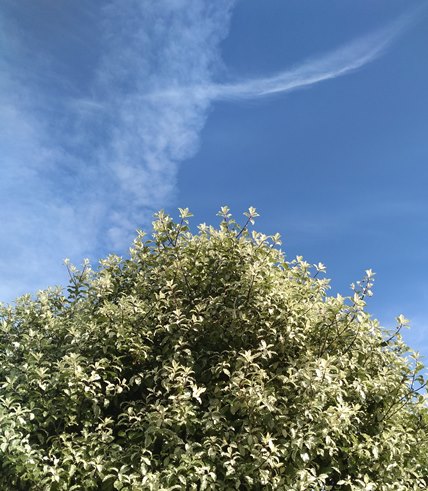Gardening in a changing climate
 In relation to other parts of the world, we live in a so called temperate climate, but recent years have shown how extreme even this can be. We're not only experiencing more extremes in temperature and rainfall, but perhaps more importantly, longer spells of these extremes and more rapid swings in weather patterns from day to day.
In relation to other parts of the world, we live in a so called temperate climate, but recent years have shown how extreme even this can be. We're not only experiencing more extremes in temperature and rainfall, but perhaps more importantly, longer spells of these extremes and more rapid swings in weather patterns from day to day.
So what do we do about adapting our gardens, so that the plats and wildlife stand the best chance of survival? Rather than rushing out to buy heat or drought tolerant plants maybe we should concentrate on making our gardens as resilient as possible to extreme weather events.
Apart from growing the plants best suited to your garden’s soil and microclimate (with thanks to the late Beth Chatto who championed the notion of ‘right plant, right place’) here are some other things to think about:
Maybe have less paving
Most of us need to park our cars and like somewhere to sit outdoors and the paving which is often used requires little maintenance. But consider lifting one or two slabs and plant up with suitable plants, ground cover, or herbs for example. There are several benefits: more plants to enjoy, a cooling effect on your microclimate, an enriched habitat for wildlife and better drainage for a start.
Alternatively, some nicely planted pots will not only add interest and improve the appearance of an area of paving, the shade and moisture from the pots will help keep the area cooler on hot days. Hostas and Ferns will love some shade, and plants such as Agapanthus are excellent for sunny spots. (Our back yard is home to numerous potted plants, the hedgehogs just love wandering and snuffling in between them, checking for beetles and the like.) Also, growing in containers means that you can grow plants that wouldn’t survive in your soil, move tender plants out for the summer and of course you can enjoy your plants at close quarters.
More lawn, proper lawn!
Lawns are an important part of the garden, not only do they enhance an area visually, setting off the surrounding borders and hard landscaping, they also have a significant effect in cooling and humidifying the air above them. There is a wealth of information from The Lawn Institute (American, but equally applicable in the British Isles), it's a good read, and may hopefully dissuade those who may be thinking about removing their lawn and encourage those who don't have one to lay one. Here is their page on temperature modification - the table at the bottom is particularly interesting with respect to the temperature above natural as opposed to artificial grass.
Plant a tree, or a shrub or two
Even a small garden should be able to accommodate a small tree, or at least a reasonable sized shrub. Not only will these provide shade and shelter from the wind and rain, but the cooling effect caused by evaporation is significant - take a walk or sit under some trees on the next hot summers day and you’ll see what I mean.
Mulch, mulch and much more mulch
All soils benefit from a mulch of organic matter, be it bought in or home-made compost.
Amongst the numerous benefits:
• Supressing weeds
• Cooling the soil
• Reducing the formation of a dry crust and the appearance of cracks on clay soil
• Reducing runoff and directing rain into the soil
• Reducing soil erosion
• Encouraging worms (which improve essential aeration and drainage on clay soils)
• Feeding the soil and the plants
If you haven’t got a compost heap or bin, or perhaps a wormery, it’s worth considering starting one. It does take a bit of time and effort, but every bit of gardening and kitchen waste (which, remember, you have paid for in the first place!) that you can recycle will be of immense benefit, and a more productive garden means more green waste for compost, more compost means a more productive garden, and so on!